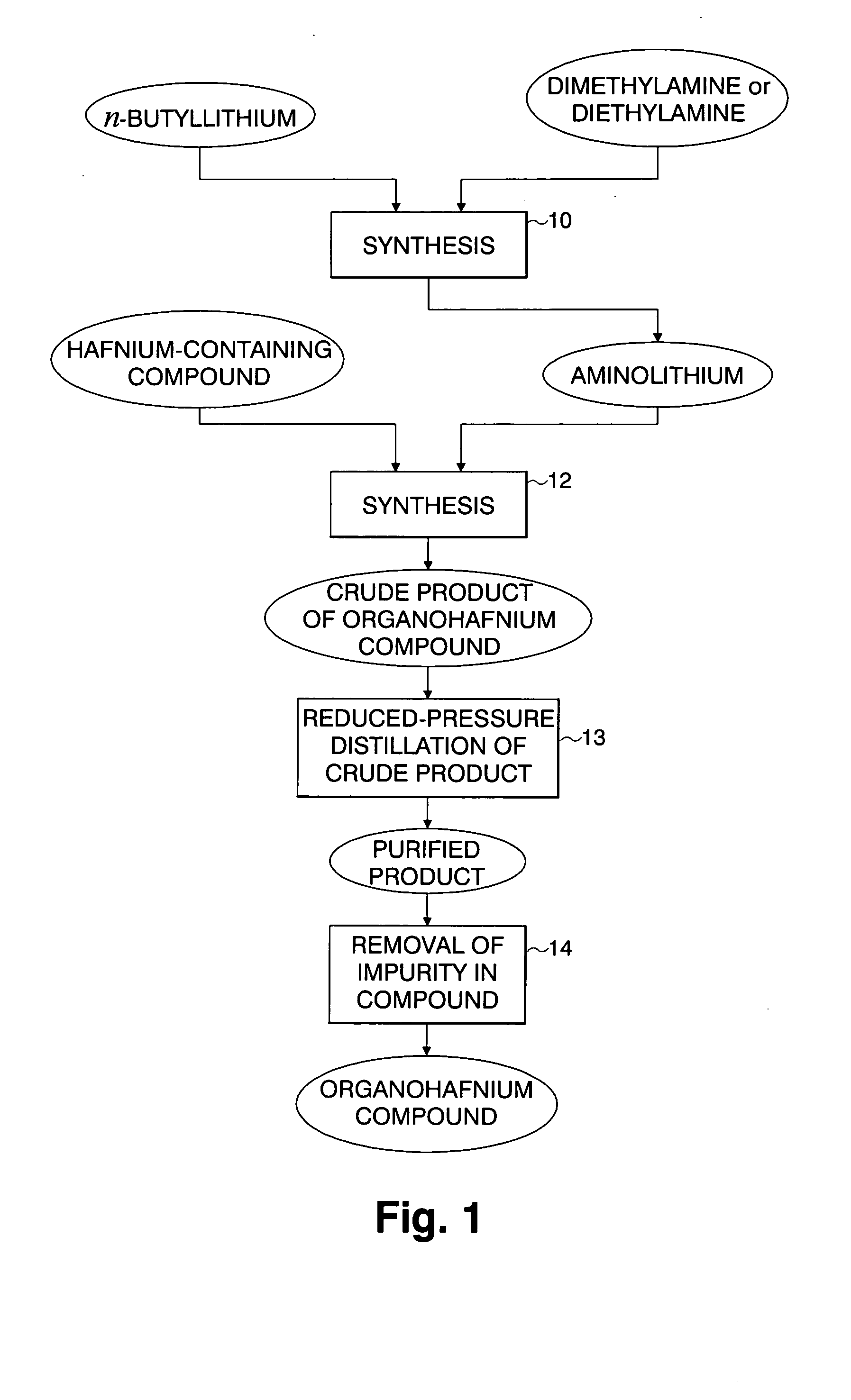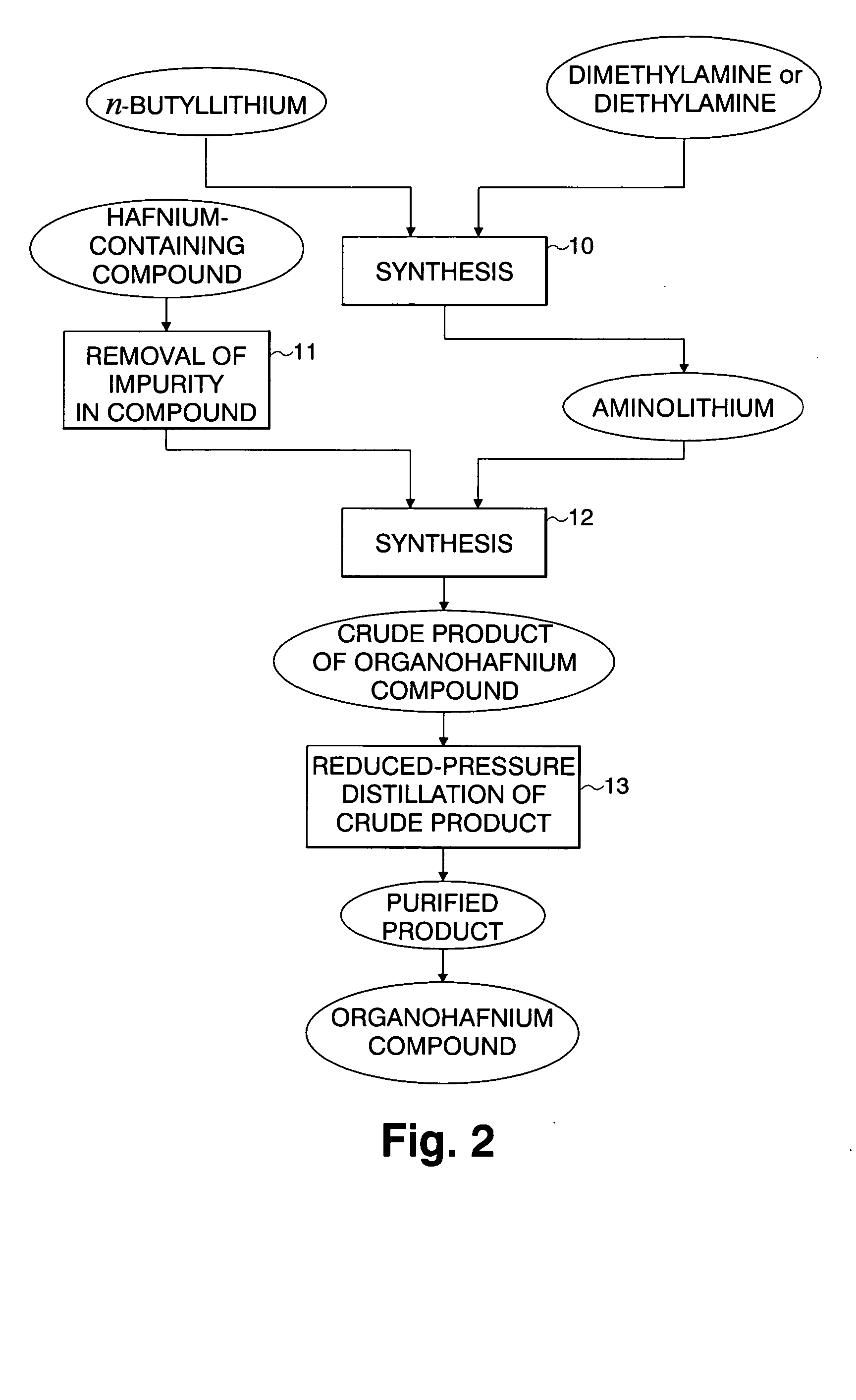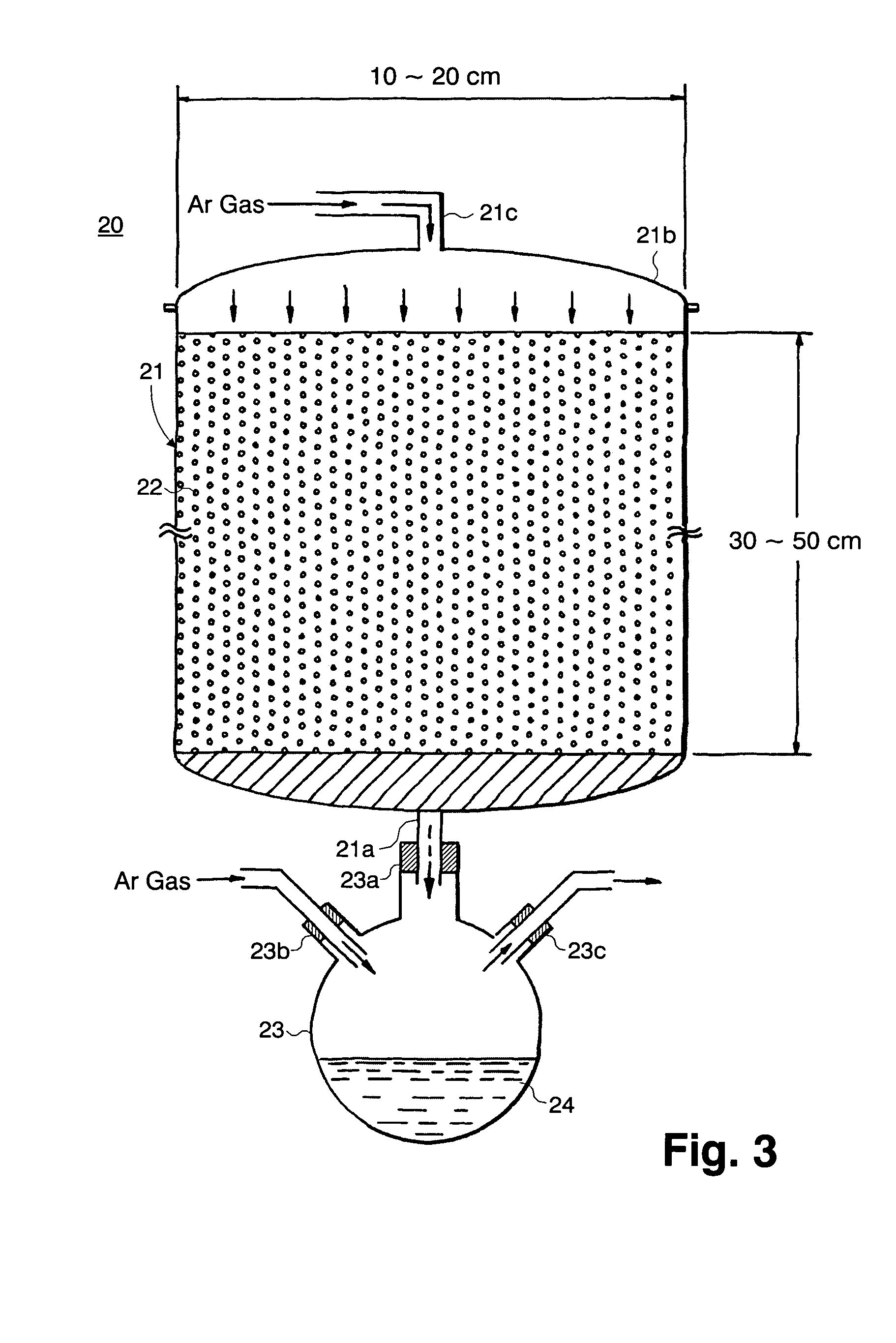Hafnium-containing material for film formation, method for producing the same, and method for producing hafnium-containing thin film using the same
- Summary
- Abstract
- Description
- Claims
- Application Information
AI Technical Summary
Benefits of technology
Problems solved by technology
Method used
Image
Examples
example 1
[0105] Hafnium tetrachloride containing 1000 ppm or more of Zr element, which is commercially available, and toluene were prepared. Also, a suspension was prepared by suspending the hafnium tetrachloride in the toluene. Further, 3-chloro-hexafluoroacetylacetone and 3-chloro-2,4-pentanedione were prepared, respectively and mixed in a weight ratio of 1:10. The obtained mixture was dissolved in diethyl ether as a solvent to form a diluted solution, in which the solvent takes 80% of total weight of the solution. The suspension and the diluted solution were mixed to produce a reaction solution of hafnium tetrachloride.
[0106] Subsequently, to an alkali metal such as metallic lithium or metallic sodium, metallic potassium was added toluene as the solvent followed by heating to 50° C. to react. The obtained supernatant reaction solution was gradually added dropwise to the hafnium tetrachloride reaction solution under ice-cooling. Thereafter, the precipitate was removed by filtrating the ha...
example 2
[0109] Hf(Et2N)4 was prepared in the same manner as in Example 1, except that the ligroin extraction was repeated for 15 times. As a result of determination of the Zr content in the obtained Hf(Et2N)4 by means of UV-VIS absorption spectrum analysis, the Zr content was 100 ppm. The resultant Hf(Et2N)4 having 100 ppm of the Zr content was used as the hafnium-containing material for film formation.
example 3
[0110] Hf(Et2N)4 was prepared in the same manner as in Example 1, except that the ligroin extraction was 18 times repeated. As a result of determination of the Zr content in the obtained Hf(Et2N)4 by means of UV-VIS absorption spectrum analysis, the Zr content was 50 ppm. The resultant Hf(Et2N) 4 having 50 ppm of Zr content was used as the hafnium-containing material for film formation.
PUM
| Property | Measurement | Unit |
|---|---|---|
| Fraction | aaaaa | aaaaa |
| Fraction | aaaaa | aaaaa |
| Fraction | aaaaa | aaaaa |
Abstract
Description
Claims
Application Information
 Login to View More
Login to View More - R&D
- Intellectual Property
- Life Sciences
- Materials
- Tech Scout
- Unparalleled Data Quality
- Higher Quality Content
- 60% Fewer Hallucinations
Browse by: Latest US Patents, China's latest patents, Technical Efficacy Thesaurus, Application Domain, Technology Topic, Popular Technical Reports.
© 2025 PatSnap. All rights reserved.Legal|Privacy policy|Modern Slavery Act Transparency Statement|Sitemap|About US| Contact US: help@patsnap.com



